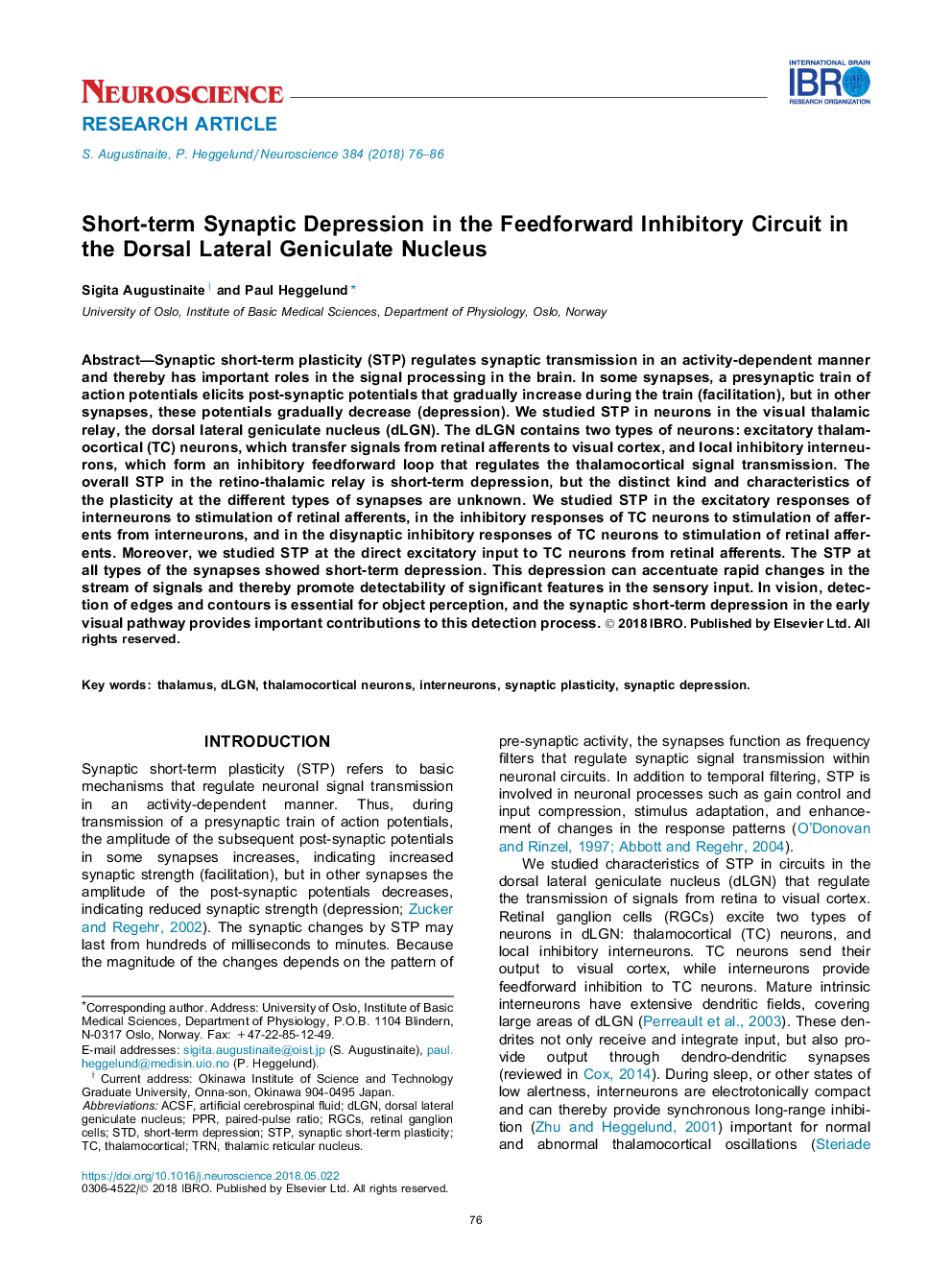| Article ID | Journal | Published Year | Pages | File Type |
|---|---|---|---|---|
| 8840660 | Neuroscience | 2018 | 11 Pages |
Abstract
Synaptic short-term plasticity (STP) regulates synaptic transmission in an activity-dependent manner and thereby has important roles in the signal processing in the brain. In some synapses, a presynaptic train of action potentials elicits post-synaptic potentials that gradually increase during the train (facilitation), but in other synapses, these potentials gradually decrease (depression). We studied STP in neurons in the visual thalamic relay, the dorsal lateral geniculate nucleus (dLGN). The dLGN contains two types of neurons: excitatory thalamocortical (TC) neurons, which transfer signals from retinal afferents to visual cortex, and local inhibitory interneurons, which form an inhibitory feedforward loop that regulates the thalamocortical signal transmission. The overall STP in the retino-thalamic relay is short-term depression, but the distinct kind and characteristics of the plasticity at the different types of synapses are unknown. We studied STP in the excitatory responses of interneurons to stimulation of retinal afferents, in the inhibitory responses of TC neurons to stimulation of afferents from interneurons, and in the disynaptic inhibitory responses of TC neurons to stimulation of retinal afferents. Moreover, we studied STP at the direct excitatory input to TC neurons from retinal afferents. The STP at all types of the synapses showed short-term depression. This depression can accentuate rapid changes in the stream of signals and thereby promote detectability of significant features in the sensory input. In vision, detection of edges and contours is essential for object perception, and the synaptic short-term depression in the early visual pathway provides important contributions to this detection process.
Keywords
Related Topics
Life Sciences
Neuroscience
Neuroscience (General)
Authors
Sigita Augustinaite, Paul Heggelund,
